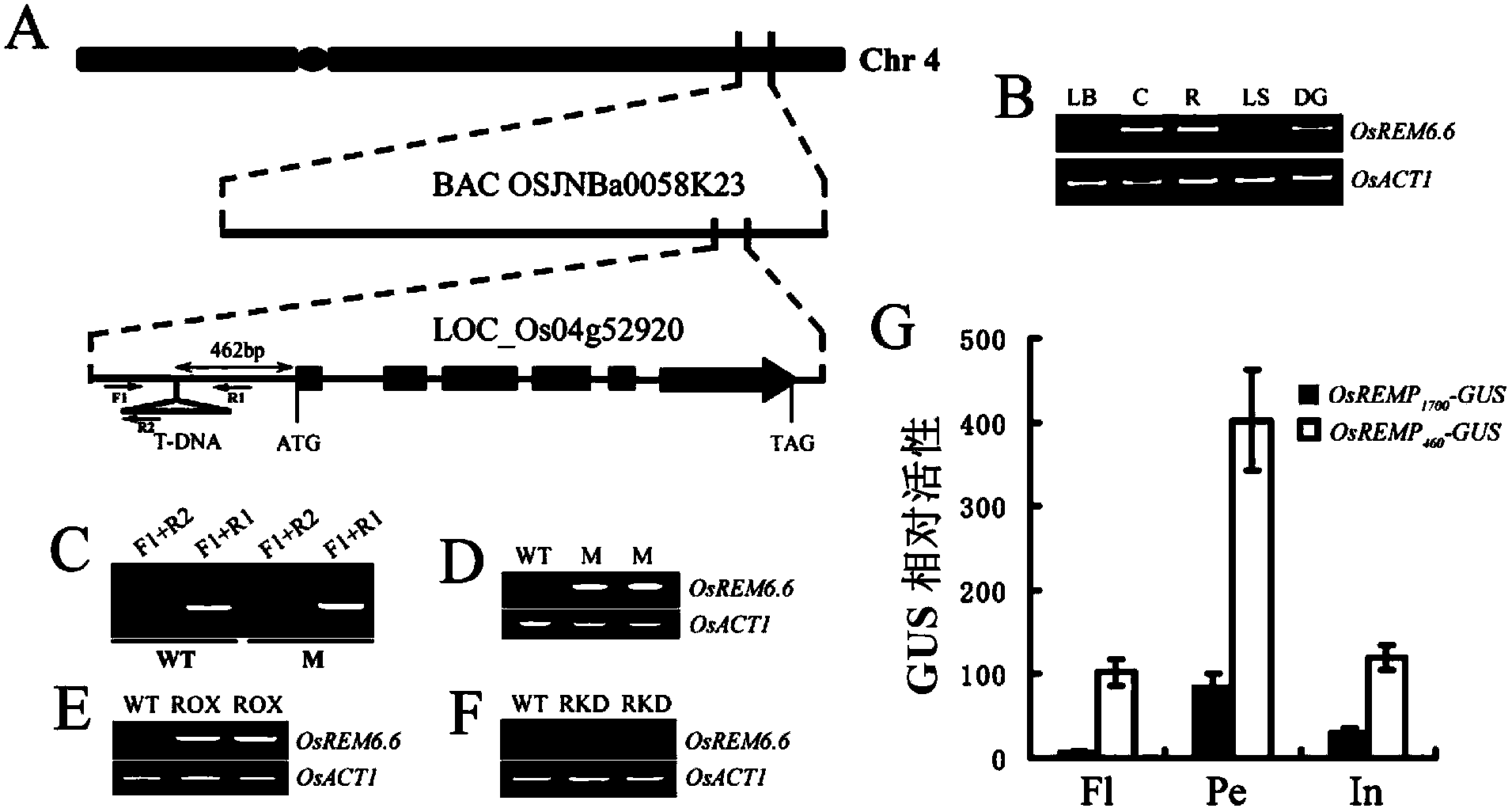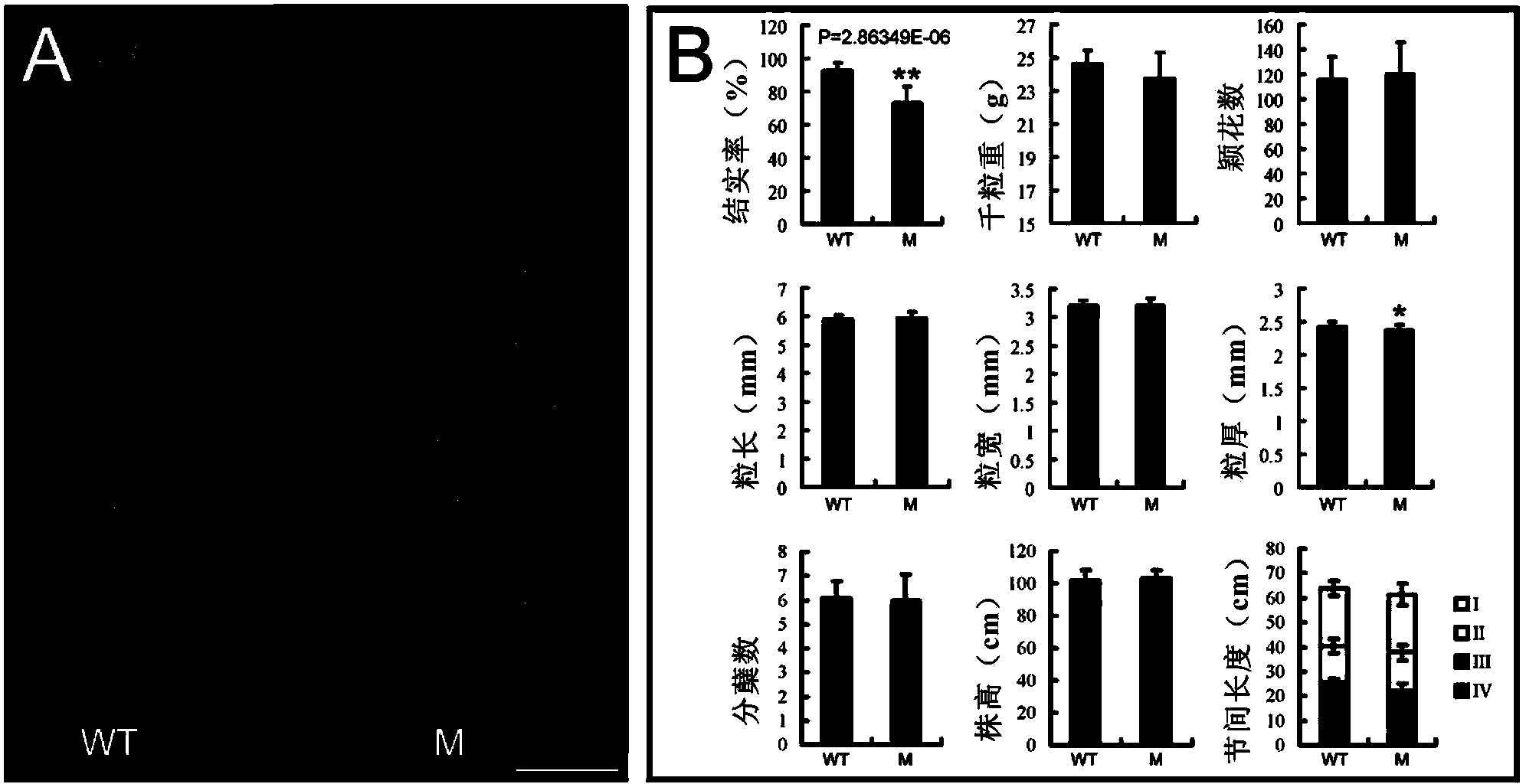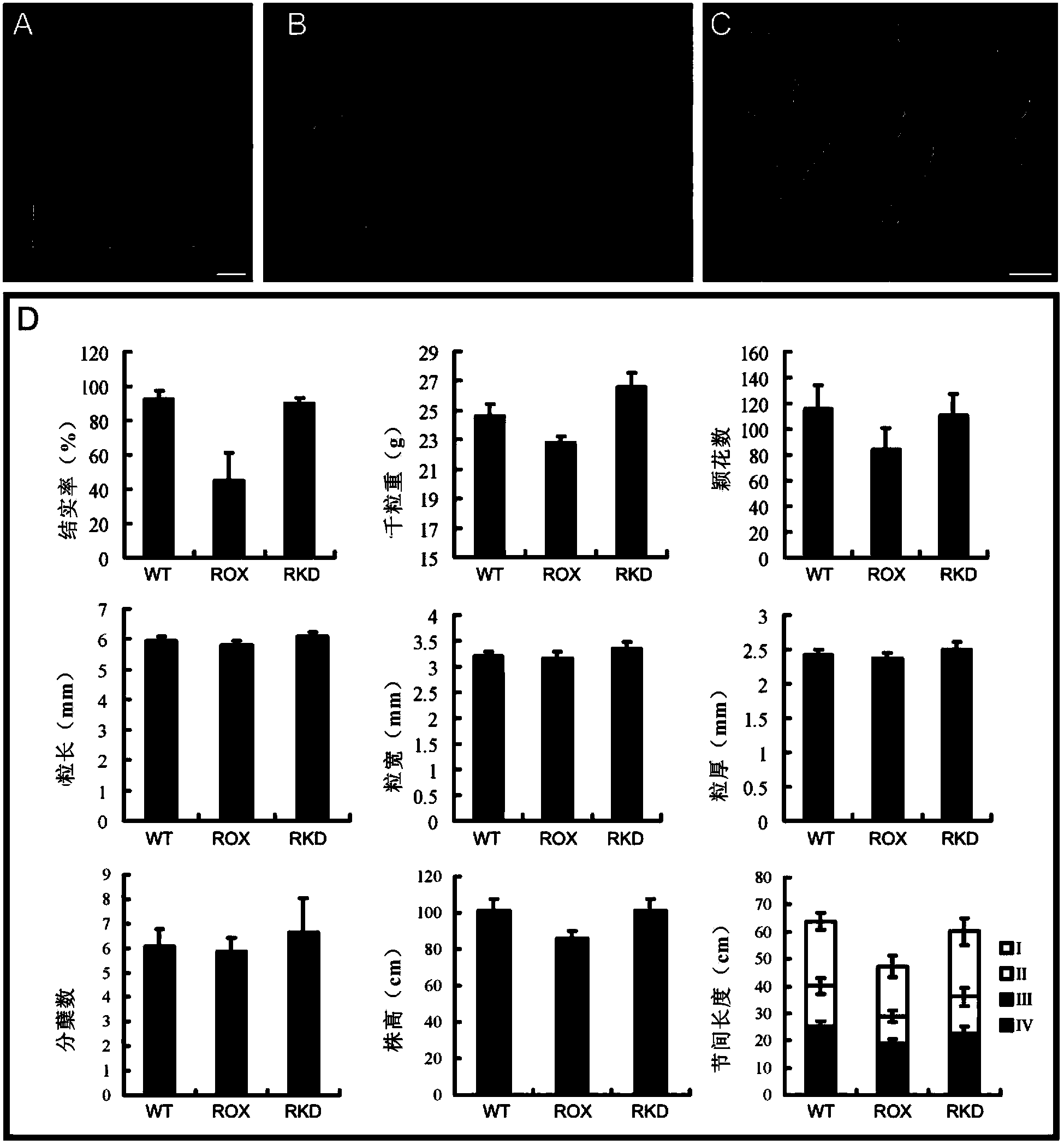Gene regulating and controlling rice seed setting rate and applications
A technology for seed setting rate and encoding gene, which is applied to the gene regulating rice seed setting rate and its application field, which can solve the problems such as the lack of breakthroughs in cloning and research.
- Summary
- Abstract
- Description
- Claims
- Application Information
AI Technical Summary
Problems solved by technology
Method used
Image
Examples
Embodiment 1
[0227] Preparation and detection of embodiment 1 rice mutant
[0228] This example was produced by transforming a plasmid carrying T-DNA and inserting it into the chromosome of rice through the commonly used transgenic experimental means.
[0229] The traits of rice mutants: the main traits of rice mutants are the two traits of seed setting rate and thousand-grain weight. The seed setting rate is the percentage of full grains to the total grains (full grains + empty grains) after the rice matures. Thousand-grain weight is the weight of one thousand seeds expressed in grams. It is an indicator of the size and fullness of the seeds, a test of seed quality and crop test content, and an important basis for predicting yield in the field.
Embodiment 2
[0230] The detection of embodiment 2 mutants
[0231] The adjacent sequence of T-DNA was queried by Tail-PCR.
[0232] Principle of TAIL-PCR technology: TAIL-PCR is also called thermal asymmetric staggered PCR. This technology designs three nested specific primers through the known sequence next to the target sequence, and uses them respectively with random degenerate primers (arbitrary degenerate prime, AD) combination, using genomic DNA as a template, performing three consecutive rounds of PCR cycles, using different annealing temperatures to selectively amplify target fragments, thereby amplifying adjacent unknown sequences from known sequences. This technique is widely used for isolation of flanking sequences from libraries of insertion mutants. The present embodiment TAIL-PCR reaction system and procedure are as follows:
[0233] Tail-PCR 1
[0234] ddH2O 9.3μl 10×Buffer 2μl Mg2+(2.5mM) 2μl
[0235] dNTP (2.5mM) 1.5μl Arbitrary primer (20μM) 2μl
[0236] T-DNA 1 prim...
Embodiment 3
[0285] Example 3 Effect of OsREM6.6 gene on rice seed setting rate and yield
[0286] In the artificial climate chamber (setting parameters: 12 hours photoperiod, light intensity 200~250μmol·m -2 ·s -1 , temperature 28±1℃), and found that the OsREM6.6 gene directly regulates the seed setting rate and yield of rice.
[0287] At the seed maturity stage, the morphological indicators of wild type (WT) and mutant (M) were statistically analyzed, figure 2 It shows that the seed setting rate of the mutant is significantly reduced, (A) is the ear phenotype of the wild type and the mutant seed maturity stage; (B) is the wild type and the mutant respectively take 10 independent lines to the seed setting rate (Seed setting rate), thousand-grain weight (1000-grain weight), spikelet number (Spikelet number), seed length (Grain lenght), seed width (Grain width), seed thickness (Grain thickness), tiller number (Tiller number), plant height ( Plant height) and internode length (Internode ...
PUM
 Login to View More
Login to View More Abstract
Description
Claims
Application Information
 Login to View More
Login to View More - R&D
- Intellectual Property
- Life Sciences
- Materials
- Tech Scout
- Unparalleled Data Quality
- Higher Quality Content
- 60% Fewer Hallucinations
Browse by: Latest US Patents, China's latest patents, Technical Efficacy Thesaurus, Application Domain, Technology Topic, Popular Technical Reports.
© 2025 PatSnap. All rights reserved.Legal|Privacy policy|Modern Slavery Act Transparency Statement|Sitemap|About US| Contact US: help@patsnap.com



